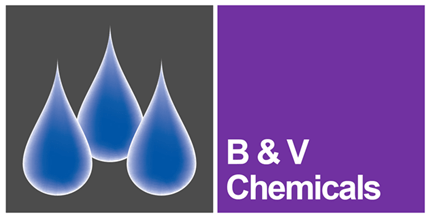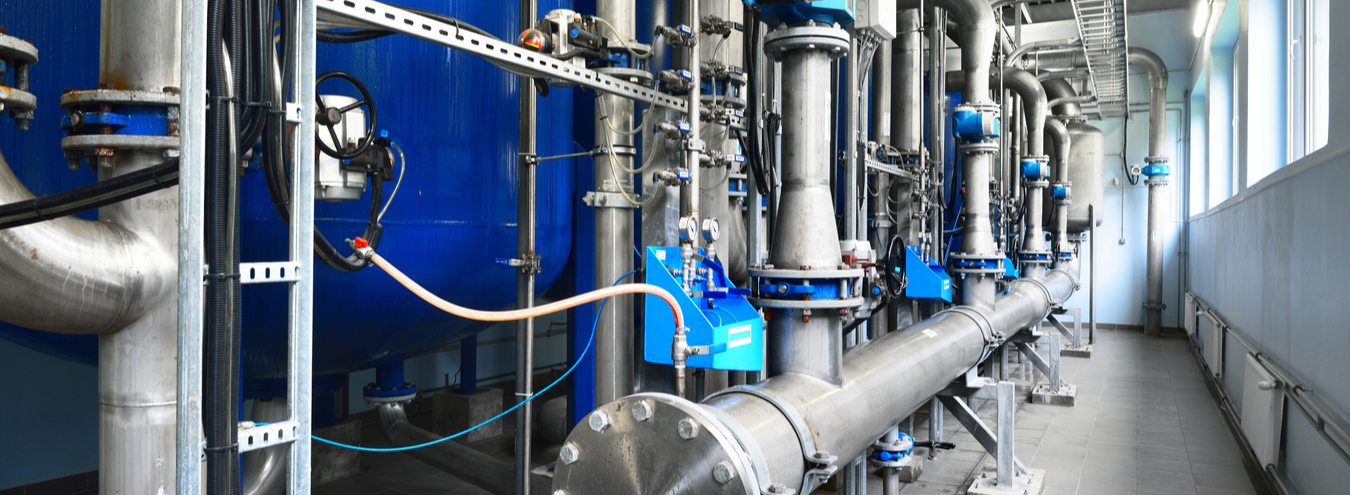Effective pre-commission cleaning of pipework systems is absolutely critical. Unfortunately, the important nature of this operation is often overlooked or under-valued.
Pre-commission cleaning of closed systems
The objective of a pre-commission clean of a closed system is to remove all grease, oil, biofilm, corrosion deposits, flux and jointing compounds and general debris from the system. This leaves a clean metal surface on which the corrosion inhibitor can act to prevent corrosion of the system over its life-time.
If pre-commission cleaning is not carried out, it can lead to a range of problems:
- If suspended solids, biofilm, grease and oil remain in the system, they will produce a layer on the pipework which will mean that the inhibitor cannot reach the metal surface and thus cannot prevent corrosion. A raw water flush is not adequate to remove these layers of contaminants from the pipework surface, a chemical cleaner is required.
- If particles of installation debris remain in the system, erosion corrosion may result under the velocities of normal operation.
- Some jointing compounds contain chloride, which in itself may accelerate corrosion of certain metals.
For these reasons, the significance of a thorough pre-commission clean carried out over a ‘realistic time window’ cannot be overemphasised.
Pre-commission cleaning of hot water and chilled systems
The pre-commission cleaning of hot water heating and chilled systems has also become more critical over recent years. This is mainly because the equipment being used is more susceptible to blockages at strainers, control valves and small bore heat exchangers.
System contaminants need to be removed by a combination of chemical cleaning and high velocity flushing. This will then allow the on-going water treatment regime to work effectively in preventing corrosion and microbiological fouling. Older systems that have accumulated deposits due to a lack of correct water treatment can also be cleaned using a similar method.
Pre-commission cleaning in ongoing water treatment
The importance of pre-commission cleaning and on-going maintenance water treatment often needs to be emphasised. The significance of this is shown through the existence of several British and European standards and BSRIA guides.
BG29/2020 “Pre-Commission Cleaning of Pipework Systems” provides the latest guidance and reflects both British and European standards. Previous blogs in this series have concentrated on the main differences between BG29/2012 and the newly published BG29/2020 but both cover good practice cleaning techniques and clarify the responsibilities of the parties involved.
Choosing water treatment chemicals
A good water treatment chemical supplier will have a range of pre-commission cleaning and flushing agents which are tailored to the requirements of the system. The range should also include biocidal flushing products, effective inhibitors, biocides and bio-dispersants.
Selecting the right product for your system requires an evaluation of the following criteria.
Product selection criteria:
1. Neutral pH: Given the complexity of newer systems, it is advisable to select a neutral formulation for pre-commission cleaning. The neutral pH will not attack any of the metals found in closed circuit systems.
2. Removal of biofilm and suspended solids: A product with a high level of polymer is required to ensure good removal of biofilm and also to mobilise suspended solids and keep them suspended in the water so that they can be removed from the system during the normal flushing operation. A biocidal flush with a combination of biocide and bio dispersant may be required for some systems.
3. Removal of oil and grease: The presence of an effective surfactant in the cleaner is required in order to ensure any oil and grease in the system are solubilised and removed from the metal surfaces.
4. Removal or corrosion deposits: It is often the case that after pressure testing of the system, raw water remains within the circuit, sometimes for prolonged periods. This can lead to corrosion on the metal surfaces. The presence of a chelant, e.g. EDTA, is required in order for any corrosion deposits to be effectively loosened, mobilised and dissolved. Each pre-commission cleaner containing a chelant will have a different iron plateau level, which will be directly correlated to the level of chelant in the formulation. The specific topic of iron plateau levels will be explored in greater depth in a future blog in this series.
NB The guideline total and soluble iron levels in BSRIA BG 29 are given as 6ppm total iron and 3ppm soluble iron. It is stated in BSRIA BG50 that it may not be possible to achieve these levels for remedial work of older systems and it is the responsibility of the cleaning contractor and client to agree realistic criteria on which to base the success of the clean.
5. Passivation of metal surfaces after cleaning: All well formulated pre-commission cleaners and system flush chemicals will contain components which passivate the bare metal surfaces after cleaning to prevent/minimise the occurrence of flash corrosion.
6. Ease of testing: It is important to be able to easily and accurately measure the levels of a pre-commission cleaner within a system. Like any other chemical formulation, these will only work optimally if they are present within the system at or above the minimum dose rate recommended by the manufacturer.
7. Pipework type: If thin walled carbon steel pipework is used, an appropriate cleaning method for this type of pipework will need to be considered. You can read more on this topic in this blog post - BSRIA BG29 2020: thin walled carbon steel pipework cleaning procedures
8. Window of opportunity: This is one of the most important factors to consider. It is often the case that unrealistically short time periods are given for pre-commission cleaning, as the critical nature of this operation is often not fully understood. The chemical manufacturer will recommend a minimum contact time for their products. If for any reason the available contact time for the cleaner is below the optimal stated by the manufacturer, they should be consulted to give additional information on whether their product will work effectively within the time available. It is possible that higher dose rates over a shorter contact period may achieve a sufficient clean, but this is not always the case.
9. Disposal considerations: In some areas of the country, and also depending on the requirements of the specific utilities company, it may be very difficult to obtain a permit for the discharge of the chemicals after cleaning. It may therefore be necessary to choose a pre-commission cleaner with minimal environmental impact. Most water treatment chemical suppliers will have on their range a low toxicity formulation, formulated as a pre-commission cleaner for use on sites where there are restrictive discharge limits.
10. Scale: For older LPHW systems, the build-up of scale may be a problem within the system, particularly on the hotter surfaces such as on the heat exchanger itself. This may lead to blockages or failure of the heat exchanger. Although acid cleaning of some systems may be an option, a more gentle clean with a specialised formulation which re-dissolves the scale is a much safer option in most systems. For information on our specialised on-line scale remover please contact our technical team.
11. Compatibility of the cleaning chemical with biocides: If a biocidal flush is being carried out in conjunction with the actual cleaning operation, a compatible biocide must be chosen. It must be the case that the biocide chosen has optimal effectiveness during the contact time available. In other words, you will not obtain optimal results during an 8 hour chemical flush with a biocide which has an optimal 12 hour contact time. It is also essential to ensure that the chosen biocide is present at the recommended concentration. This can only really be achieved if the system volume is known very accurately or a biocide is used for which a test kit is available.
Summary
Recognition of the critical nature of a through pre-commission clean in relation to the effectiveness on-going water treatment of the system, efficiency of the system and ‘life span’ of the system cannot be emphasised too strongly. It is hoped that greater emphasis on pre-commission cleaning and the water treatment of these systems will result from the greater awareness in the industry due to the production of the new guidance documents produced and detailed in last week's blog.
For advice on product selection or for any technical queries relating to water treatment within closed circuit systems please contact our technical team.




